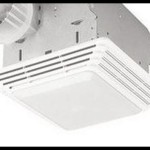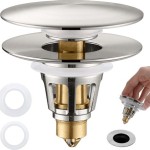Can You Use Bleach on Bathroom Tiles? A Comprehensive Guide
The bathroom, a space dedicated to hygiene and personal care, is unfortunately also an environment highly susceptible to the growth of mold, mildew, and bacteria. These unwanted inhabitants thrive in damp conditions and can quickly colonize surfaces, particularly bathroom tiles and grout. Bleach, a common household disinfectant, is often considered a quick and effective solution for tackling these problems. However, the question of whether to use bleach on bathroom tiles isn't a simple yes or no. A thorough understanding of tile materials, bleach's properties, and potential risks is crucial for making an informed decision.
The primary goal of cleaning bathroom tiles is to remove dirt, soap scum, hard water stains, and organic growth such as mold and mildew. Left unaddressed, these issues can lead to discoloration, unpleasant odors, and potentially pose health hazards. While a variety of cleaning products are available, bleach’s potent disinfecting and whitening capabilities make it a frequently considered option. Before reaching for the bleach bottle, however, it's essential to consider the type of tile you have, the potential damage bleach can cause, and safer alternatives that may be more appropriate for your specific situation.
Understanding Different Types of Bathroom Tiles
Bathroom tiles are manufactured from a wide range of materials, each possessing unique properties and sensitivities to cleaning agents. The most common types of bathroom tiles include ceramic, porcelain, natural stone (such as marble, granite, and limestone), glass, and vinyl. Each material reacts differently to bleach, making it imperative to identify your tile type before application.
Ceramic and porcelain tiles are generally considered bleach-resistant. They are manufactured through a high-temperature firing process, resulting in a durable and non-porous surface. This makes them relatively impervious to chemical damage from bleach. However, the grout between these tiles presents a different challenge, as grout is porous and can be discolored or weakened by repeated bleach applications.
Natural stone tiles, on the other hand, require considerably more caution. Marble, limestone, and travertine are particularly vulnerable to acidic substances, including bleach. Bleach can etch the surface of these stones, leading to permanent dullness and damage. While some types of granite are more resistant, it’s best to err on the side of caution and avoid using bleach unless specifically recommended by the tile manufacturer or a professional stone cleaner.
Glass tiles are typically non-porous and resistant to bleach, but the grout remains a concern. Additionally, some glass tiles may have a coating or finish that could be affected by bleach. A test in an inconspicuous area is always recommended. Vinyl tiles are generally durable and bleach-resistant, but prolonged exposure can cause discoloration or fading over time.
The Pros and Cons of Using Bleach
Bleach, specifically sodium hypochlorite, is a powerful oxidizing agent. This chemical property allows it to effectively kill bacteria, fungi (including mold and mildew), and viruses. It also possesses strong whitening capabilities, making it appealing for removing stains and brightening discolored grout. The effectiveness of bleach in disinfecting and whitening is undeniable, but its use comes with potential drawbacks.
One major disadvantage is the risk of damage to certain tile types, as previously mentioned. Natural stone is particularly susceptible, and even ceramic and porcelain tiles can suffer grout degradation with repeated bleach applications. Another concern is the potential for discoloration, especially on colored grout or tiles. Bleach can strip away the color, leaving behind unsightly patches. Furthermore, bleach is a harsh chemical that can irritate the skin, eyes, and respiratory system. Proper ventilation and protective gear, such as gloves and eye protection, are essential when using bleach.
The environmental impact of bleach is also a factor to consider. When bleach reacts with organic matter, it can produce harmful byproducts, including trihalomethanes (THMs), which are known carcinogens. Moreover, bleach can be harmful to aquatic life if it enters waterways. Safer and more environmentally friendly alternatives are available for cleaning bathroom tiles.
Safer Alternatives to Bleach for Cleaning Bathroom Tiles
Given the potential risks associated with bleach, exploring alternative cleaning solutions is often a wiser and more sustainable approach. Several effective and less harmful options are available, catering to different types of stains and cleaning needs. These alternatives minimize the risk of damage to your tiles, protect your health, and lessen the environmental impact.
Vinegar, a mild acid, is a versatile cleaning agent effective against hard water stains, soap scum, and mildew. A solution of equal parts white vinegar and water can be sprayed onto the tiles and grout, allowed to sit for a few minutes, and then scrubbed with a brush. Baking soda, a mild abrasive, is excellent for removing stubborn stains. A paste of baking soda and water can be applied to the affected area, left to sit, and then scrubbed.
Hydrogen peroxide is another effective disinfectant and stain remover. It is generally safer than bleach and can be used on most tile surfaces. A 3% hydrogen peroxide solution can be sprayed onto the tiles and grout and allowed to sit for several minutes before scrubbing. Commercial tile and grout cleaners are specifically formulated to clean bathroom tiles without causing damage. These cleaners often contain a blend of surfactants, enzymes, and mild acids that effectively remove dirt, grime, and stains. Look for pH-neutral cleaners that are safe for all tile types.
Steam cleaning is an effective and environmentally friendly method for cleaning and disinfecting bathroom tiles. The high temperature of the steam kills bacteria, mold, and mildew without the need for harsh chemicals. A steam cleaner can be used to clean both the tiles and the grout, leaving them sanitized and refreshed.
Prevention is always better than cure. Regular cleaning and maintenance can prevent the buildup of dirt, soap scum, and mold, reducing the need for harsh cleaning agents. Wiping down the tiles after each shower can help prevent water stains and mildew growth. Proper ventilation is also crucial for preventing moisture buildup in the bathroom. Ensure adequate airflow by opening windows or using an exhaust fan during and after showers.
Ultimately, the decision of whether or not to use bleach on bathroom tiles depends on several factors, including the type of tile, the severity of the problem, and your personal preferences. If you choose to use bleach, exercise extreme caution, wear appropriate protective gear, and ensure adequate ventilation. However, considering the potential risks and the availability of safer alternatives, exploring other cleaning methods is often a more prudent and responsible approach. A thorough understanding of the properties of different cleaning agents and the specific needs of your bathroom tiles is essential for maintaining a clean, healthy, and aesthetically pleasing bathroom environment.

Can You Clean Bathroom Tiles With Bleach Well Worst Room

Can You Use Clorox To Clean Tile Grout The Medic

Can You Clean Bathroom Tiles With Bleach Well Worst Room

7 Most Powerful Ways To Clean Tiles Grout Naturally

Can You Use Bleach On Marble Tiles And Floors Clorox

How To Clean With Bleach In A Bathroom Family Handyman

Cleaning Solutions That Contain Ammonia Or Bleach To Clean Grout

How To Clean Floor Tile Grout In The Bathroom Clorox

I M A Professional Cleaner This Is Why You Should Never Bleach Your Bathroom And What To Use Instead The Sun

Black Mold In The Shower How To Clean It Kitchen With Matt
Related Posts







